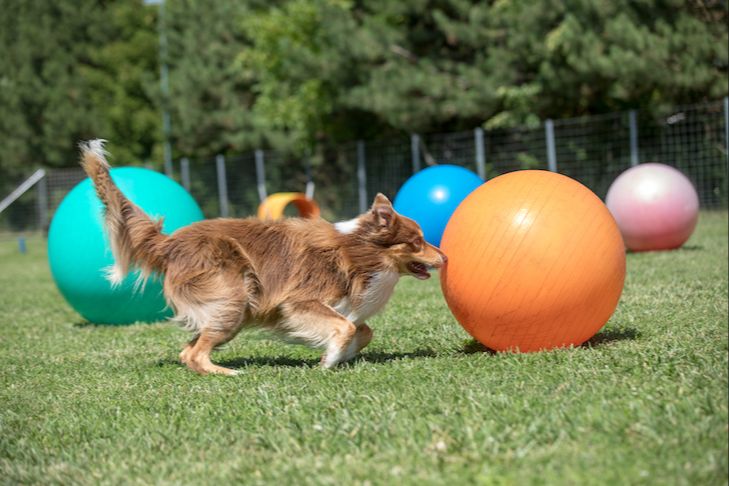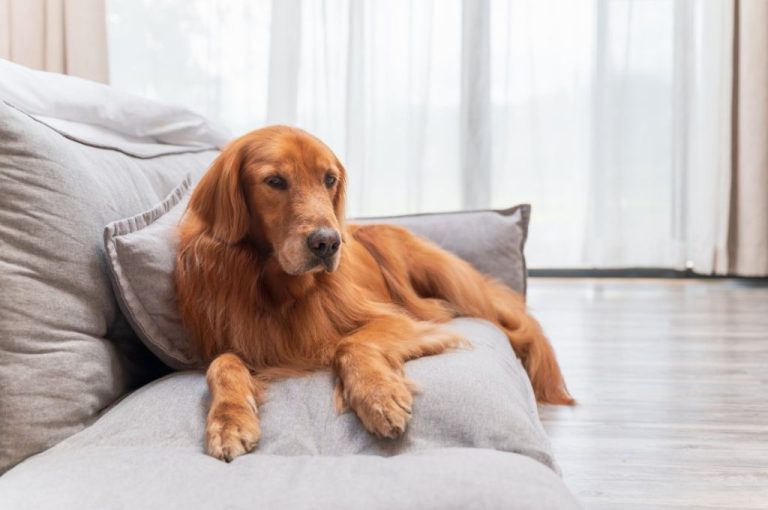Fitness Challenges For Furry Friends
Regular physical activity plays an important role in keeping pets physically and mentally healthy. A proper fitness routine can provide many benefits for pets including improved cardiovascular function, muscle tone, digestion, mental stimulation and more. Numerous studies have shown that regular exercise can help pets maintain a healthy body weight, reduce anxiety and other behavioral issues, strengthen their immune system, and even prolong their lifespan. According to The benefits of exercise for your pet, exercise helps lower blood pressure, build muscle, and support bone health in pets. Additionally, walking helps dogs poop and pee regularly. Overall, an appropriate exercise program tailored to your pet’s needs is vital for their overall wellbeing.
Set Attainable Goals
It’s important not to overdo it when starting a new fitness routine with your dog. Attainable goals take into account your fitness level and your dog’s health and breed-specific exercise needs. As one expert advises, “Make sure the goals take into account your fitness level and your dog’s health and breed-specific exercise needs.” (Source). Start slow with short walks or play sessions, then gradually increase the duration and intensity. Pushing too hard too fast can lead to injuries or burnout for both you and your pup.
Choose the Right Activities
It’s important to tailor fitness activities to your pet’s specific needs and abilities. Consider size, breed, and age when selecting appropriate exercises. Small dogs may not be able to keep up with larger breeds on long walks, while senior pets or those with mobility issues should avoid high-impact activities.
Swimming is an excellent low-impact exercise for pets of all ages and breeds according to The Ultimate List Of Exercise Ideas For Dogs And Cats (source). Other good options include going for walks, playing fetch, hiking, agility training, or jogging on leash if your dog can keep up the pace.
The key is choosing activities your pet enjoys and is physically capable of based on their condition, fitness level, and preferences. Rotate through several types of exercise to keep your furry friend engaged.
Make It Fun
Incorporating play and rewards into workouts is a great way to motivate your pet and make fitness fun. Using toys during activities like fetching or tug-of-war can encourage your dog or cat to engage more actively. You can also use treats strategically during or after exercise as a reward for effort and participation. As recommended by FitBark, switching up toys during fetch keeps your dog engaged by introducing novelty and challenge into the game (FitBark). Company of Animals suggests scent games and hide-and-seek as mentally stimulating activities that get pets moving. Constructing an agility or obstacle course in your home or yard provides physical and mental exercise as your pet navigates the various challenges. Throughout these activities, be sure to provide lots of praise and petting to positively reinforce your animal’s activity.
Monitor Progress
As with any fitness routine, tracking your dog’s progress is crucial to seeing improvements over time. Consider weighing your dog regularly in order to quantify muscle gain or fat loss. You can create a simple spreadsheet to track their weight over weeks and months. Look for patterns and acknowledge progress. According to Pet Monitors: Keeping track of your pet’s health, “As pets age or illnesses progress, monitoring data may alert you and your vet to changes in patterns of activity, appetite or other factors that signal declining health.”
Beyond weight, make notes about your dog’s energy levels and abilities. Can they run farther or faster during fetch sessions? Do they have an easier time climbing stairs or jumping into the car? Notice positive changes in stamina, strength, mobility, and attitude. According to the article The 6 Best Dog Fitbits and Activity Trackers for Your Pup’s, fitness trackers for dogs can also help monitor progress by tracking steps, distance, calories, and more.
By regularly monitoring your dog’s vitals and keeping notes about improvements, you’ll be able to motivate each other, celebrate successes, modify routines if needed, and ensure your fitness program is working.
Address Medical Issues
It’s crucial to consult with your veterinarian before starting an exercise program, especially if your pet is obese, has arthritis, or other medical conditions. According to VCA Animal Hospitals, veterinarians often recommend exercise restrictions or modifications to allow a pet to heal after surgery or injury. Your vet can help create a specialized fitness plan tailored to your dog’s needs and limitations.
Conditions like heart disease, arthritis, and obesity may require starting with low-impact activities like short walks and swimming. Check with your vet on the type and duration of exercise recommended. They can help determine any signs of overexertion to monitor. With guidance from your vet, an exercise program can improve your dog’s mobility, strength, and quality of life despite medical issues. But specialized regimens are crucial to prevent worsening of conditions.
Proper Nutrition
Proper nutrition is crucial for supporting your dog’s fitness regimen and overall health. Feeding them a high-quality diet formulated for active dogs will provide the balanced nutrition they need. According to Parkland Veterinary Hospital, you should feed your dog the appropriate amount of a premium dog food to reach and maintain their optimal weight for their breed and activity level.
Look for a dog food designed for active or working dogs, as these formulas have higher calorie, protein, and fat levels to meet increased energy demands. For example, Pro Plan Sport Performance contains 30% protein and 20% fat to help maximize oxygen uptake and enhance endurance. Consult your veterinarian if unsure which formula best supports your dog’s fitness regimen.
It’s also important to feed proper portion sizes to avoid obesity, which puts stress on joints and the cardiovascular system. Stick to the recommended feeding guidelines on your dog food package based on your dog’s ideal weight and activity level. Weighing portions and monitoring your dog’s weight will help ensure their diet supports an active, healthy lifestyle.
Safety First
When exercising with your pet, it’s important to take precautions against overheating, dehydration, joint issues, and other safety concerns. Dogs and cats can easily overexert themselves, so monitor your pet for signs of fatigue, rest often, and stick to short, age-appropriate exercise sessions. Overheating is a serious risk, so avoid strenuous activity in hot, humid weather. Make sure your pet has access to water before, during, and after exercise. Elderly pets and those with mobility issues or arthritis should only do low-impact activities like short walks. Don’t force your pet to overexert – let them set their own pace. Reference proper techniques for activities like running with your dog using a waist leash to avoid neck strain. Take care to exercise on soft surfaces, not concrete. Know the warning signs of overheating and injury so you can stop activity before harm occurs. With some basic precautions, exercising with your furry friend can be safe, beneficial fun for you both!
Sources:
https://www.henryford.com/blog/2020/07/workout-with-dog-safely
Enrichment Beyond Fitness
Mental stimulation is important too. Tricks, toys, socializing, and other enrichment activities are great ways to exercise your pet’s brain. A tired dog is a good dog, so be sure to incorporate mental exercises into your pet’s routine.
There are lots of simple ways to provide mental enrichment at home. Rotate your pet’s toys so they don’t get bored. Set up a scavenger hunt by hiding treats around the house. Use puzzle toys that require your pet to problem solve to get the treats or kibble inside. You can even make DIY puzzle toys by putting treats or kibble inside a cardboard box or paper bag and letting your pet figure out how to rip it open.
Training is great mental stimulation too. Even just 5-10 minutes of training per day can tire out your pet. Teach them new commands, tricks, or agility skills. The ASPCA recommends nosework as a great way to engage your pet’s powerful sense of smell (source).
Socializing with other pets and people also provides mental enrichment. Set up pet playdates or take your furry friend to the dog park. Interacting with different people and animals exercises important social skills.
With a little creativity, you can come up with all sorts of DIY enrichment ideas to stimulate your pet both physically and mentally. A tired dog is a happy, healthy dog!
Consistency is Key
Regular exercise is essential for your pet’s health throughout their life. Making fitness a consistent habit is crucial to maintaining your furry friend’s physical and mental wellbeing. Studies show that dogs who exercise regularly have lower rates of obesity, arthritis, anxiety, and behavior problems (https://www.surepetcare.com/en-us/advice-news/dog-care/dog-health-and-behavior/why-consistent-exercise-is-important-for-dogs). Setting a routine with daily walks, playtime, or training establishes good lifelong habits. It also strengthens the bond between owner and pet. Try setting up a schedule for exercise times to maintain consistency. Make fitness fun by exploring new walking routes or investing in interactive toys. Consistency pays off in a healthier, happier dog!





